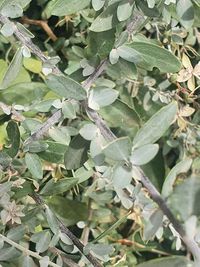
Cadaba farinosa: "A shrub of tropical Africa and Arabia. Spinach is made from the leaves."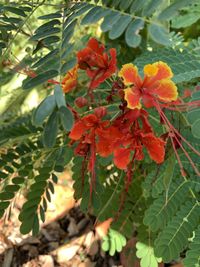
Caesalpinia pulcherrima: "Cosmopolitan tropics. The green seeds are eaten raw and have the taste of peas."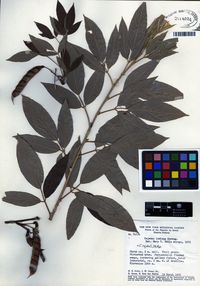
Cajanus indicus: "East Indies. The pigeon pea is a perennial shrub, though treated generally as an annual when in cultivation. It is now naturalized in the West Indies, in tropical America and in Africa. The variety Bicolor grows from three to six feet high and is called the Congo pea in Jamaica. The variety Flavus grows from five to ten feet high and is called in Jamaica no-eye pea, pigeon pea and Angola pea6 Dr. MacFayden says there are few tropical plants so valuable. Lunan says the pea when young and properly cooked is very little inferior as a green vegetable to English peas and when old is an excellent ingredient in soups. Berianger says at Martinique there are several varieties greatly used, and that the seeds both fresh and dried are delicious. In Egypt, on the richest soil, says Mueller, 4000 pounds of peas have been produced to the acre, and the plant lasts for three years, growing 15 feet tall. This variety is said by Pickering to be native of equatorial Africa. In India, the seeds of the two varieties are much esteemed, ranking, with the natives, third amongst their leguminous seeds. Elliott says the pulse when split is in great and general esteem and forms the most generally used article of diet among all classes in India. At Zanzibar, the seeds are a principal article of diet. It is both cultivated and wild all over India as well as in all parts of tropical Africa. It certainly is one of the oldest cultivated plants in the world, a fact attested by its presence in ancient tombs. Schweinfurth states that it is found in Egyptian tombs of the twelfth dynasty (2200- 2400 B. C.)."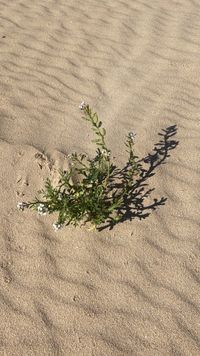
Cakile maritima: "Europe, northern Africa and North America. Kalm says the sea rocket furnishes a root in Canada which is pounded, mixed with flour and eaten, when there is a scarcity of bread."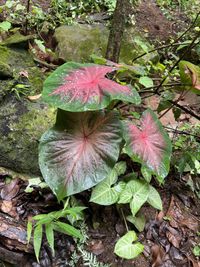
Caladium bicolor: "South America. The corms are eaten roasted or boiled. The leaves are eaten, boiled as a vegetable, in the West Indies."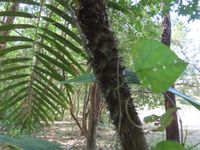
Calamus rotang: "East Indies. Thunberg saw the fruit of the rattan exposed for sale in Batavia. When ripe this fruit is roundish, as large as a hazelnut and is covered with small, shining scales, laid like shingles, one upon the other. The natives generally suck out the subacid pulp which surrounds the kernel by way of quenching their thirst. Sometimes the fruit is pickled with salt and eaten at tea-time. This palm furnishes rattan canes."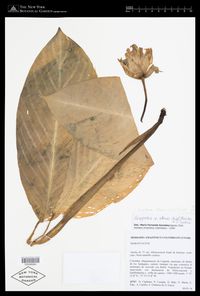
Calathea allouia: "Guiana. This species is cultivated in the West Indies and, according to Lindley, furnishes one of the arrowroots of commerce."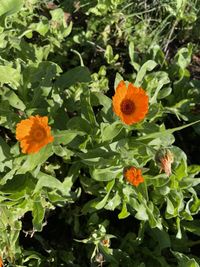
Calendula officinalis: "Southern Europe. This marigold was cultivated in England prior to 1573. The petals of the flowers are occasionally used in broths and soups in Britain and Holland and are also used for coloring butter. In 1806, it was included in McMahon's list of aromatic, pot and sweet herbs of American gardens. There are a number of ornamental varieties, and the species is to be found in many of our country gardens. The plant is described in nearly all of the early herbals and is mentioned by Albertus Magnus in the thirteenth century."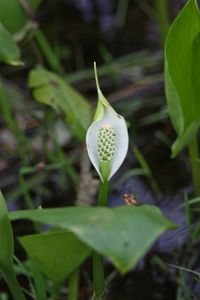
Calla palustris: "Europe, Northern Asia and North America. The rootstocks of this plant yield eatable starch, prepared by drying and grinding them and then heating the powder until the acrid properties are dissipated."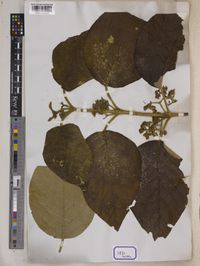
Callicarpa lanata: "East Indies. The bark has a peculiar, subaromatic and slightly bitter taste and is chewed by the Cinghalese when they cannot obtain betel leaves."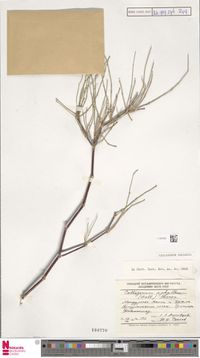
Calligonum pallasia: "Caspian region, Russia and Siberia. The roots when pounded are said to furnish a mucilaginous, edible substance resembling gum tragacanth."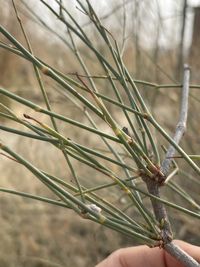
Calligonum polygonoides: "Armenia, Persia and northwestern India. The abortive flowers, which fall in great numbers, are, in the south Punjab and sometimes in Sind, swept up, made into bread, or cooked with ghee and eaten."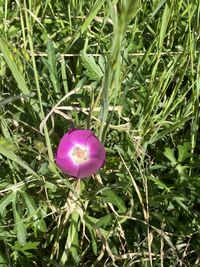
Callirhoe involucrata: "Northwestern America. The large, tapering root of this plant is said to be edible. It is an inmate of the flower garden in France."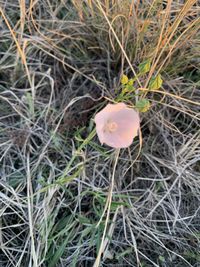
Callirhoe pedata: "Northwestern America. The roots of this species resemble those of a parsnip and are used as food by the Indians of Nebraska and Idaho. In France it is grown in flower gardens."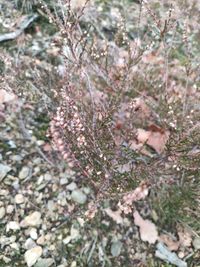
Calluna vulgaris: "Europe and North America. The Celtic tribes had a method of preparing an intoxicating drink from a decoction of heath. This beverage, mixed with wild honey, was their common drink at feasts. In the Hebrides, says Johnson, a kind of beer is formed by fermenting a mixture of two parts of heath tops and one of malt. The Picts had a mode of preparing beer or wine from the flowers of the heath."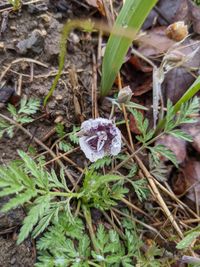
Calochortus elegans: "Pacific northwest of America. The root of this plant is eaten by the Indians."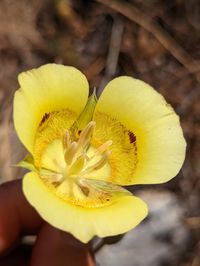
Calochortus luteus: "Western United States. This plant has a small, bulbous root about the size of a walnut, very palatable and nutritious and much used by the Indian tribes of Utah as an article of food. The Mormons during their first years in Utah consumed the root in large quantities."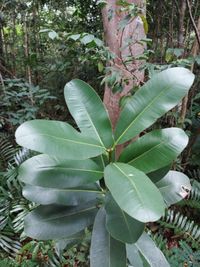
Calophyllum inophyllum: "Old world tropics. The fruit when ripe is red and sweet and is eaten by the natives. An oil is expressed from it and is used in lamps."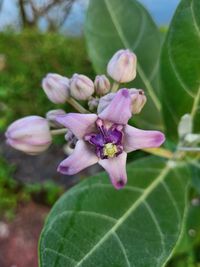
Calotropis gigantea: "East India. According to Twemlow, an intoxicating liquor called bar is obtained from the plant by the Hill People about Mahableshwur. According to Royle, it yields a kind of manna."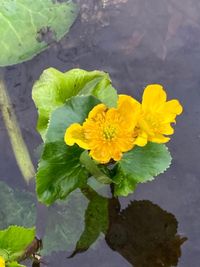
Caltha palustris: "Of northern climates. This well-known plant, says Gray, is used as a potherb in spring when coming into flower, under the name of cowslip. In the Southern States, the flower-buds are pickled for use as a substitute for capers."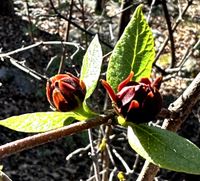
Calycanthus floridus: "North America. The aromatic bark is said to be used as a substitute for cinnamon."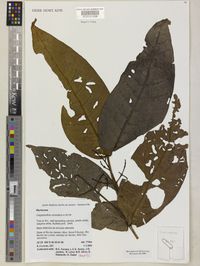
Calyptranthes aromatica: "South Brazil. Mueller says the flower-buds can be used as cloves; the berries, as allspice."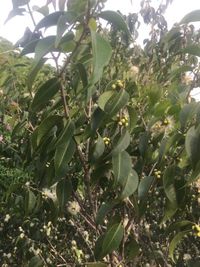
Calyptranthes obscura: "Brazil. The fruit is sold in Rio Janeiro as an aromatic and astringent."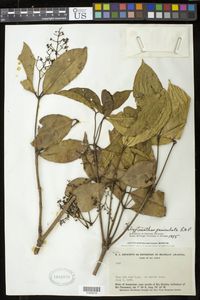
Calyptranthes paniculata: "Peru. The fruit is used as a substitute for cloves."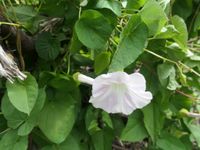
Calystegia sepium: "Temperate climates. It has edible stalks which are eaten by the Hindus. The roots are said to be boiled and eaten by the Chinese, who manage, says Smith, to cook and digest almost every root or tuber in spite of the warnings of botanists and chemists."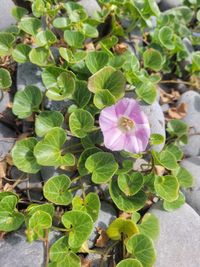
Calystegia soldanella: "Temperate climates. The tender stalks of the sea bindweed are pickled. The young shoots, says Johnson, were gathered formerly by the people on the southern coasts of England and pickled as a substitute for samphire."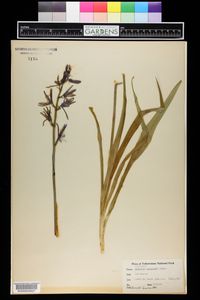
Camassia esculenta: "Northwestern America. The root forms the greater part of the vegetable food of the Indians on the northwest coast of America and Vancouver Island and is called kamosh or quamash. This bulbous root is said to be of delicious flavor and highly nutritious, but Lewis says it causes bowel complaints if eaten in quantity. This plant covers many plains and is dug by the women and stored for eating, roasted or boiled. The bulbs, when boiled in water, yield a very good molasses, which is much prized and is used on festival occasions by various tribes of Indians. In France, it is an inmate of the flower garden."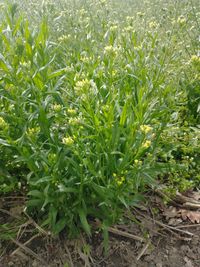
Camelina sativa: "Europe and temperate Asia. This plant occurs in northeastern America as a noxious weed in flax fields, having been introduced from Europe. It was regularly cultivated in the mediaeval ages in Germany and Russia and is now cultivated in Flanders. The stem yields a fiber, but the stalks seem to be used only in broom making. The seeds yield an oil which is used for culinary and other purposes. In 1854, the seeds of this plant were distributed from the United States Patent Office. It was called in Britain gold-of-pleasure even in the time of Gerarde. The seeds are sometimes imported into England under the name dodder seed, but they have no relation to the true dodder which is a far different plant."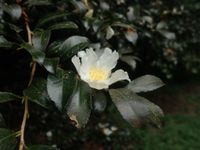
Camellia sasanqua: "Japan and China. This plant was introduced from China to England in 1811. It yields a nut from which an oil is expressed in China, equal, it is said, to olive oil. In Japan the dried leaves are mixed with tea to give it a grateful odor."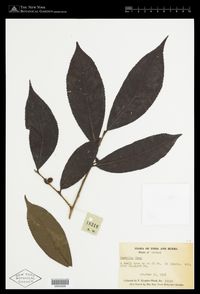
Camellia thea: "China. This is the species to which the cultivated varieties of tea are all referred. In its various forms it is now found in China and Japan, in the mountains that separate China from the Burmese territories, especially in upper Assam, in Nepal, in the islands of Bourbon, Java, St. Helena and Madeira, in Brazil and experimentally in the United States. The first mention of tea seems to have been by Giovanni Pietro Maffei in his Historiae Indicae, 1589, from which it appears that it was then called by the Chinese chia. Giovanni Botero in his Delia Cause della grandezza...delta citta, 1589, says the Chinese have an herb from which they extract a delicate juice, which they use instead of wine. In 1615, an Englishman in Japan, in the employment of the East India Company, sent to a brother official at Macao for a "pot of the best chaw," and this is supposed to be the earliest known mention by an Englishman. Adam Olearius describes the use of tea in Persia in 1633, and says—his book being published in 164 —"this herb is now so well known in most parts of Europe, where many persons of quality use it with good success." In 1638, Mandelslo visited Japan and about this time wrote of the tsia or tea of Japan.
Prior to 1657, tea was occasionally sold in England at prices ranging from $30 to $50 a pound. In 1661, Mr. Pepys, secretary of the British Admiralty, speaks of "tea (a China drink) of which I had never drank before," and in 1664, the Dutch India Company presented two pounds and two ounces to the King of England as a rare and valuable offering and in 1667 this company imported 100 pounds. In 1725, there were imported into England 370,323 pounds; in 1775, the quantity had increased to 5,648,188 pounds. In 1863, upwards of 136,000,000 pounds were imported of which 85,206,779 pounds were entered for home consumption. In 1863, the United States received 29,761,037 pounds and 72,077,951 pounds in 1880.
In 1810, the first tea plants were carried to Rio Janeiro, together with several hundred Chinese experienced in its culture. The government trials do not seem to have resulted favorably but later, the business being taken up by individuals, its culture seems to be meeting with success and the tea of Brazil, called by its Chinese name of cha, enters quite largely into domestic consumption. In 1848, Junius Smith, of South Carolina, imported a number of shrubs and planted them at Greenville. At about the same time some 32,000 plants were imported from China and distributed through the agency of the Patent Office. In 1878, the Department of Agriculture distributed 69,000 plants. In Louisiana, in 1870, a plantation of tea shrubs, three to four hundred in number, is said to have existed."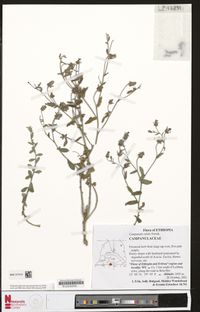
Campanula edulis: "Arabia. The root is thick, sapid and is eaten by children."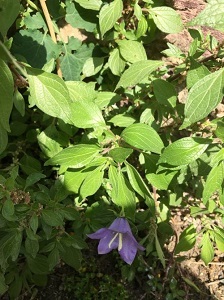
Campanula persicifolia: "Europe and north Asia. This plant has been used as food in England but has long since fallen into disuse. In France it is called cloche and is grown as a flowering plant."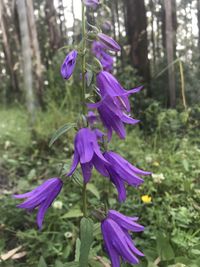
Campanula rapunculoides: "Europe and temperate Asia. This plant may be substituted in cultivation for rampion. It has long since fallen into disuse."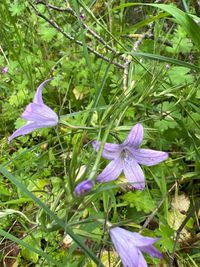
Campanula rapunculus: "Europe, Orient, north Africa and northern Asia. This biennial plant was formerly much cultivated in gardens for its roots as well as its leaves. Loudon says the latter are excellent, eaten raw as a salad or boiled as a spinach, and the root, which has the flavor of walnuts, is also eaten raw like a radish or mixed with salads, either raw or boiled and cold. It is Rampion is recorded in gardens by Pena and Lobel, 1570, and is figured by Tragus, 1552, Lobel, 1576, as well as by other writers of this period, as an improved root. In 1726, Townsend says it is to be found in only few English gardens; and Bryant, 1783, says it is much cultivated in France but in England is now little regarded. It is recorded in American gardens in 1806, 1819 and 1821. As late as 1877, an English writer says rampion is a desirable addition to winter salads."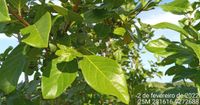
Campomanesia aromatica: "Guiana and Cayenne. At Martinique, where this shrub is cultivated, it is called guava strawberry, because the flavor of its delicate pulp reminds one of the Pine strawberry. The fruit is edible."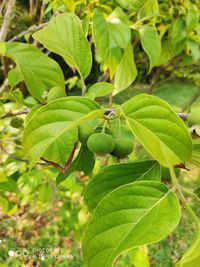
Campomanesia lineatifolia: "Peru. This species furnishes edible fruit."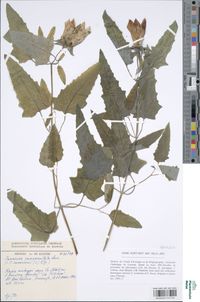
Canarina campanulata: "Canary Islands. The fleshy capsule, roots and young shoots are said to be edible."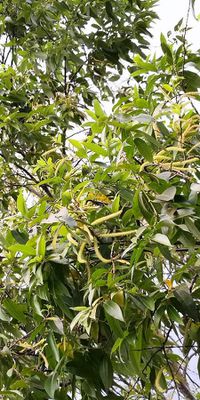
Canarium album: "A tree native of China and Cochin China, Anam and the Philippines. The fruit is pickled and used as olives."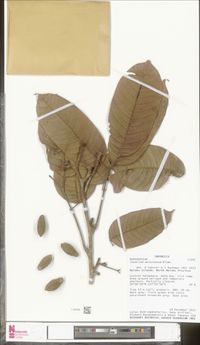
Canarium commune: "Moluccas. This fine-looking tree is cultivated for the sake of its fruit which, in taste, is something like an almond. An oil is expressed from the seed which in Java is used in lamps and when fresh is mixed with food. Bread is also made from its nuts in the island of Celebes. In Ceylon, the nut is called wild almond by Europeans and is eaten."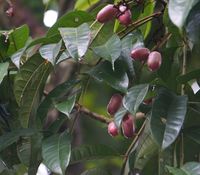
Canarium edule: "Tropical Africa. This is the safu of the island of St. Thomas in the Gulf of Guinea, where its fruit is much esteemed. In taste, the fruit is bitter and astringent; it is usually roasted."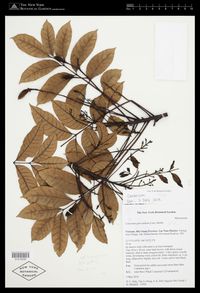
Canarium pimela: "Cochin China, China and Java. The black fruit is sometimes pickled."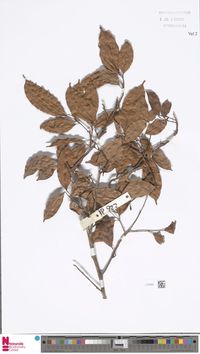
Canarium sylvestre: "Amboina. The plant bears nuts with edible kernels."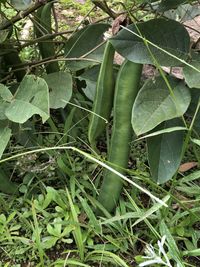
Canavalia ensiformis: "Tropical Africa. This climbing plant is commonly cultivated about Bombay. The half-grown pods are eaten. It is cultivated in the Peninsula for its esculent pods; in Burma to a small extent, where its young pods are eaten; and also in the Philippines. The plant is common in woods in the East Indies, tropical Africa, Mexico, Brazil and the West Indies. It is called overlook by the negroes of Jamaica.6 Elliott7 says it is found only in a cultivated state and is probably the domesticated form of C. virosa. Firminger says it is a native vegetable of India, the pod large, flat, sword-shaped, fully nine inches long, and more than an inch and a quarter wide. Though rather coarse-looking, yet when sliced and boiled, is exceedingly tender and little, if any, inferior to the French bean. Roxburgh describes three varieties: flowers and seeds red; flowers white and seeds red; flowers and large seed white. This last variety is considered the best and is used on the tables of Europeans as well as by the natives of Sylhet where it is indigenous. Drury says it is a common plant in hedges and thickets and in cultivation. It is called in India mukhun seen."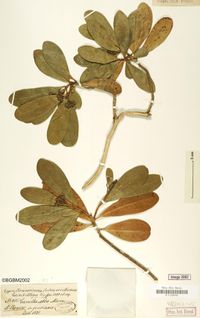
Canella alba: "West Indies. The bark is employed by the negroes as a condiment and has. some reputation as an antiscorbutic."
Canna achiras: "South Africa. This plant is said to furnish tubers used as food in Peru and Chile. It is one of the species cultivated in the West Indies for the manufacture of the arrowroot known as tous les mois according to Balfour."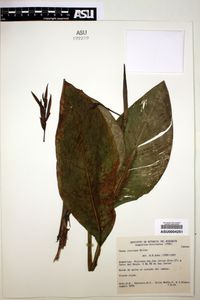
Canna coccinea: "East Indies. This plant is said by Mueller and Balfour to yield the tous les mois of the West Indies."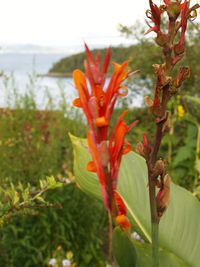
Canna edulis: "American tropics. This plant is cultivated in the islands of St. Christopher, Trinidad and probably elsewhere. The tubers are said to be quite large and when rasped to a pulp furnish, by washing and straining, one of the classes of arrowroot known as tous les mois. It is one of the hardiest of arrowroot plants. It is the adeira or ackiras of Peru."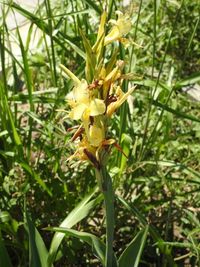
Canna glauca: "Mexico and West Indies. This is one of the West Indian arrowroot cannas."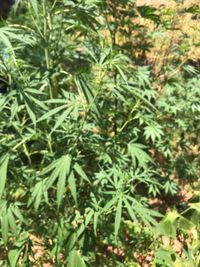
Cannabis sativa: "Caspian, central Asia and northwestern Himalayas. Hemp is spontaneous in the north of India and in Siberia. It has also been found wild in the Caucasus and in the north of China. Its native country is probably the region of the Caspian. Hemp was cultivated by the Celts. The Scythians, according to Herodotus, cultivated it. The Hebrews and the ancient Egyptians did not know it, for no mention is made of it in the sacred books and it does not appear in the envelopes of the mummies. Its culture is ancient throughout the southern provinces of India as a textile plant and for the stimulating properties of the leaves, flowers and seeds. Dioscorides alludes to the strength of the ropes made from its fibre and the use of the seeds in medicine. Galen refers to it medicinally. It was known in China as early as A. D. 220. It was introduced into the United States before 1639, as Wm. Wood n mentions it.
Hempseed was served fried for dessert by the ancients. In Russia, Poland and neighboring countries, the peasants are extremely fond of parched hempseed and it is eaten even by the nobility. The oil expressed from the seed is much used as food during the time of the fasts in the Volga region. The plant is cultivated by the Hottentots for the purpose of smoking and it is used in like manner by the negroes of Brazil. In the East, hemp is grown largely for the sake of the churras, or resin, which possesses intoxicating properties. The Arabs smoke the sun-dried leaf mixed with tobacco in huge pipes, while the Africans smoke the hemp alone. For fibre purposes and for seed, the plant is largely grown in Russia and North America."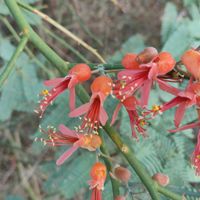
Capparis aphylla: "Northern Africa, Arabia and East Indies. In India, the bud of this plant is eaten as a potherb, and the fruit is largely consumed by the natives, both green and ripe and is formed into a pickle. In Sind, the flowerbuds are used as a pickle, and the unripe fruit is cooked and eaten. Both the ripe and unripe fruit, prepared into a bitter-tasting pickle, is exported into Hindustan. Its fruit, before ripening, is cooked and eaten by the Banians of Arabia. The African species is described by Barth as forming one of the characteristic features in the vegetation of Africa from the desert to the Niger, the dried berries constituting an important article of food, while the roots when burned yield no small quantity of salt."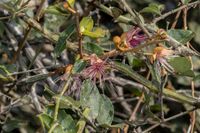
Capparis horrida: "Tropical Asia and Malays. In the southern Punjab and Sind, the fruit is pickled."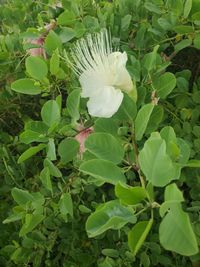
Capparis spinosa: "Mediterranean regions, East Indies and Orient. This species furnishes buds which are substituted for the capers of commerce. It is used as a caper. The preserved buds have received wide distribution as a vegetable. The caper was known to the ancient Greeks, and the renowned Phryne, at the first period of her residence in Athens, was a dealer in capers. The Greeks of the Crimea, according to Pallas, eat the sprouts, which resemble those of asparagus, as well as the bud, shoot, and, in short, every eatable part of the shrub. Wilkinson states that the fruit of the Egyptian caper, or lussef, is very large, like a small cucumber, about two and a half inches long and is eaten by the Arabs. According to Ruellius, Aristotle and Theophrastus describe the plant as not cultivated in gardens, but in his time, 1536, it was in the gardens of France. In Sind and the Punjab, the fruit is pickled and eaten. It is now cultivated in the south of Europe for the flower-buds, which furnish the capers of commerce. About 1755, capers were imported into South Carolina by Henry Laurens. They were raised successfully for two years in Louisiana, before 1854, but the plants afterwards perished by frost."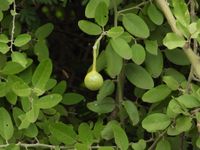
Capparis tomentosa: "This is the kowangee of tropical Africa. In famines at Madi, spinach is made from its leaves."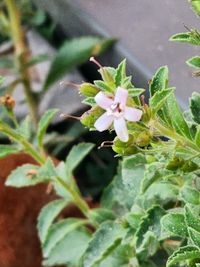
Capraria biflora: "Tropical America. Lunan says the leaves not only resemble those of tea but make an equally agreeable decoction. Titford says an infusion of them is a very good beverage."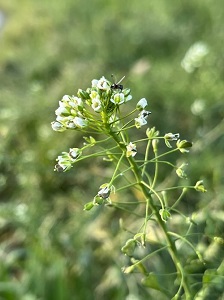
Capsella bursa-pastoris: "Temperate regions. One of the commonest of weeds, this plant has accompanied Europeans in all their navigations and established itself wherever they have settled to till the soil. Johns says it was formerly used as a potherb. Johnson says, as improved by cultivation, "it is used in America as a green vegetable, being largely raised about Philadelphia for sale in the markets." Darlington, the botanist, who lived near Philadelphia, calls it "a worthless little intruder from Europe," and we are disposed to believe that the statement of its culture is one of the errors which are copied from book to book. In China, it is collected by the poor and largely eaten as food."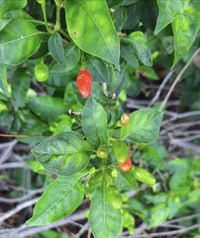
Capsicum annuum: "Tropical regions. Booth says this species was introduced into Europe by the Spaniards and that it was cultivated in England in 1548. The fruits are variable, some being yellow, others red and others black. The pods, according to London, are long or short, round or cherry-shaped. In lower Hungary, the variety now very largely cultivated for commercial purposes, has a spherical, scarlet fruit. It is cultivated in India, in America, and, indeed, almost everywhere in warm countries."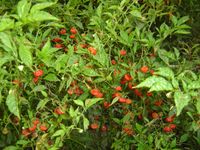
Capsicum baccatum: "Tropical regions. Booth says this species is indigenous to both the East and West Indies and has been grown in England since 1731. The pods are erect, roundish, egg-shaped, very pungent. It was probably early introduced into India as shown by the belief that it is native. It is used like other red peppers by the Mexicans who call it chipatane."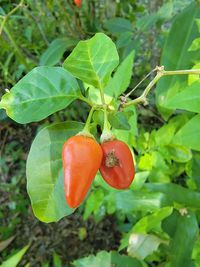
Capsicum cerasiforme: "Tropics. Its stem is 12 to 15 inches high; fruit erect, of a deep, rich, glossy scarlet when ripe; of intense piquancy. A variety occurs with larger, more conical and pendent pods, and there is also a variety with yellow fruit."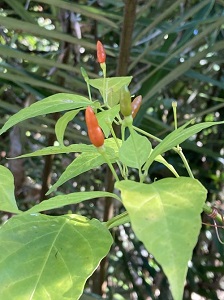
Capsicum frutescens: "Tropical America. This plant is considered by some botanists as a native of India, as it has constantly been found in a wild state in the Eastern Islands, but Rumphius argues its American origin from its being so constantly called Chile. It is the aji or uchu seen by Cieza de Leon in 1532-50, during his travels in Peru and even now is a favorite condiment with the Peruvian Indians. This pepper is cultivated in every part of India, in two varieties, the red and the yellow, and in Cochin China. In Ceylon there are three varieties, a red, a yellow and a black. It has been in English gardens since 1656. Its long, obtuse pods are very pungent and in their green and ripe state are used for pickling, for making Chile vinegar; the ripe berries are used for making cayenne pepper. Burr describes the fruit as quite small, cone-shaped, coral-red when ripe, and intensely acrid but says it will not succeed in open culture in the north."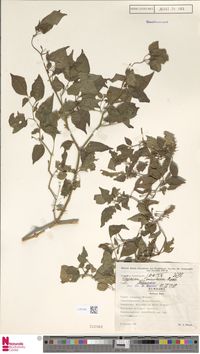
Capsicum minimum: "Philippine Islands. This is said to be the cayenne pepper of India. Wight says this pepper is eaten by the natives of India but is not preferred. It grows also on the coast of Guinea and is recognized as a source of capsicum by the British Pharmacopoeia. It is intensely pungent."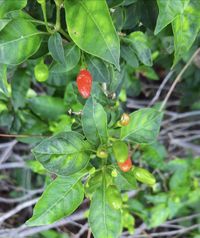
Capsicum tetragonum: "Tropical regions. This species is said by Booth to be the bonnet pepper of Jamaica. The fruits are very fleshy and have a depressed form like a Scotch bonnet. In lower Hungary, under the name paprika, the cultivation gives employment to some 2500 families. The fruit is red, some three and a half to five inches long, and three-quarters of an inch to an inch in diameter. McMahon, 1806, says capsicums are in much estimation for culinary purposes and mentions the Large Heart-shaped as the best. He names also the Cherry, Bell and Long Podded. In 1826, Thorbum offers in his catalog five varieties, the Long or Cayenne, the Tomato-shaped or Squash, the Bell or Ox-heart, the Cherry and the Bird or West Indian. In 1881 he offers ten varieties."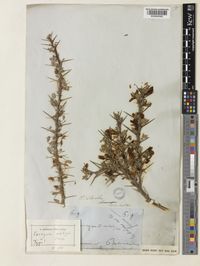
Caragana ambigua: "Baluchistan. The flowers are eaten by the Brahmans in Baluchistan, where it is called shinalak."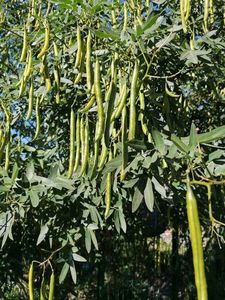
Caragana arborescens: "Siberia. The seeds are of culinary value but are used particularly for feeding poultry."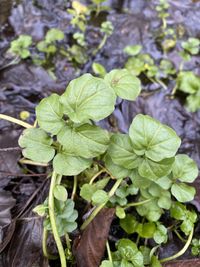
Cardamine amara: "Europe and northern Asia. Lightfoot says the young leaves are acrid and bitter but do not taste amiss in salads. Johnson says the leaves are often employed by country people in salads, their caste, although pungent and bitter, is not unpleasant."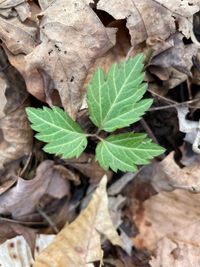
Cardamine diphylla: "North America. The long, crisp rootstocks taste like water cress. Pursh says they are of a pungent, mustard-like taste and are used by the natives as mustard."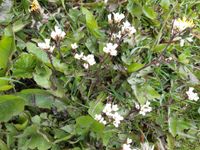
Cardamine glacialis: "Capt. Cook found this scurvy plant in plenty about the Strait of Magellan in damp places and used it as an antiscorbutic."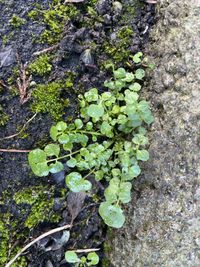
Cardamine hirsuta: "Temperate and subtropical regions. Ross calls this the scurvy grass of Tierra del Fuego; it is edible. Lightfoot says the young leaves, in Scotland, make a good salad, and Johns says the leaves and flowers form an agreeable salad. In the United States, Elliott6 and Dewey both say the common bitter cress is used as a salad."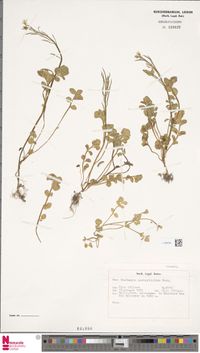
Cardamine nasturtioides: "Chile. The plant is eaten as a cress."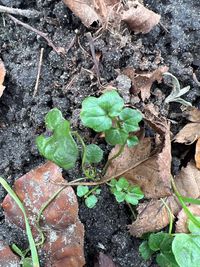
Cardamine pratensis: "Temperate zone. This is an insignificant and nearly worthless salad plant, native to the whole of Europe, northern Asia and Arctic America, extending to Vermont and Wisconsin. It has a piquant savor and is used as water cress. It is recorded as cultivated in the vegetable garden in France by Noisette, 1829, and by Vilmorin, 1883, yet, as Decaisne and Naudin remark, but rarely. There is no record of its cultivation in England, but in America it is described by Burr in four varieties, differing in the flowers, and as having become naturalized to a limited extent, a fact which implies a certain cultivation. Its seed is not offered in our catalogs."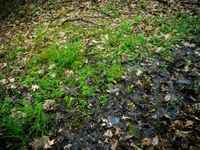
Cardamine rotundifolia: "Northern America. The leaves, says Gray, "have just the taste of the English water-cress."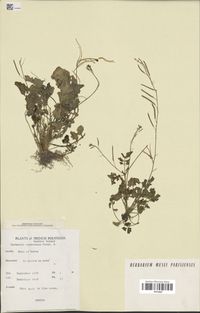
Cardamine sarmentosa: "Islands of the Pacific. This plant is eaten as a cress in New Caledonia."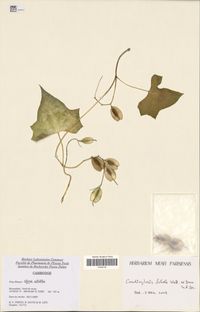
Cardiopteris lobata: "East Indies. It has oleraceous leaves, edible but almost insipid."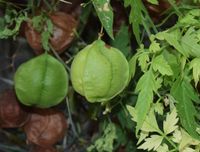
Cardiospermum halicacabum: "Tropics. This climbing vine, ornamental on account of its inflated pods, is said by Pickering to be native of subtropical North America and by Black to occur in all tropical countries. In Burma, according to Mason, it is grown in great quantities as a vegetable. In the Moluccas, as Drury states, the leaves are cooked. In equatorial Africa, it is common and the leaves are made into spinach by the natives as Grant observed."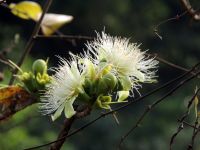
Careya arborea: "East India. The fruit is eaten."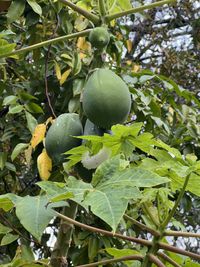
Carica citriformis: "African Tropics. This plant bears a fruit the size of an orange, eatable but insipid."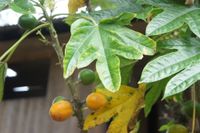
Carica microcarpa: "South America. The plant bears fruit the size of a cherry."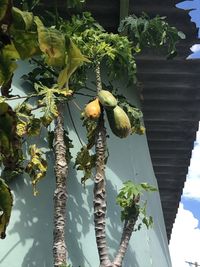
Carica papaya: "American tropics. The papaw tree is indigenous in Brazil, Surinam and the West Indies and from these places has been taken to the Congo. Its transfer to the East Indies may have occurred soon after the discovery of America, for, as early as 1626, seeds were brought from the East Indies to Nepal. Its further distribution to China, Japan and the islands of the Pacific Ocean took place only in the last century0 Linschoten says, it came from the East Indies to the Philippines and was taken thence to Goa. In east Florida, it grows well. Of the fruit, Wm. S. Alien of Florida, writes that it is often as large as a melon, yet the best varieties for eating — those having the best flavor — are no larger than a very large pear. The fruit is used extensively in south Florida and Cuba for making tough meat tender. The toughest meat is made tender by putting a few of the leaves or the green fruit of the pawpaw tree into the pot with the meat and boiling. In a few minutes, the meat will cleave from the bones and be as tender as one could wish.
Dr. Morris read before the Maryland Academy of Science a paper by Mr. Lugger in which the fruit is said to attain a weight of 15 pounds, is melon-shaped, and marked as melons are with longitudinally-colored stripes. The fruit may be sliced and pickled. The ripe fruit is eaten with sugar or salt and pepper. The seeds are egg-shaped, strong-flavored and used as a spice. The leaves have the property of making meat wrapped up in them tender. Brandis also says, meat becomes tender by washing it with water impregnated with the milky juice, or by suspending the joint under the tree. Williams says, the Chinese are acquainted with this property and make use of it sometimes to soften the flesh of ancient hens and cocks by hanging the newly-killed birds in the tree, or by feeding them upon the fruit beforehand. The Chinese also eat the leaves. Hemdon says, on the mountains of Peru, the fruit is of the size of a common muskmelon, with a green skin and yellow pulp, which is eaten and is very sweet and of a delicate flavor. Hartt says the mamao, a species of Carica in Brazil, furnishes a large and savory fruit full of seeds. Brandis calls the ripe fruit in India sweet and pleasant, and says the unripe fruit is eaten as a vegetable and preserved. Wilkes says, it is prized by the natives of Fiji, and Gray says the fruit is a favorite esculent of the Sandwich Islanders. The tree bears in a year or 18 months from seed and is cultivated in tropical climates."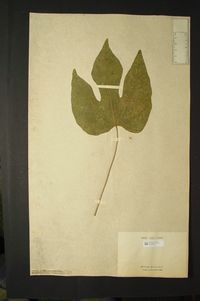
Carica posopora: "Peru and Chile. This species bears yellow, pear-shaped, edible fruit."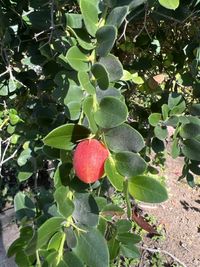
Carissa grandiflora: "South Africa. The flavor is subacid and agreeable and the fruit is much prized in Natal for preserving."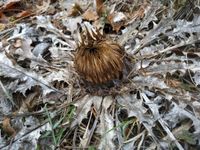
Carlina acanthifolia: "Mediterranean region. The receptacle of the flowers may be used like that of an artichoke."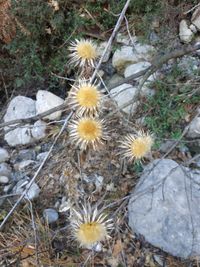
Carlina vulgaris: "Europe and northern Asia. The receptacles of the flowers are used like an artichoke."
Carlotea (Hippeastrum) formosissimum: "Pernambuco. The tuberous root, abounding with soft and nutritive fecula, has afforded assistance to the people in parts of Brazil, in times of drought."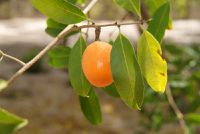
Carpodinus acida: "A climbing shrub of Sierra Leone. The fruit has a sharp, acid taste, with some little bitterness, which prevents its being agreeable; it is, however, much liked by the natives."
Carpodinus dulcis: "Sierra Leone. The fruit is yellow externally, in size and appearance resembling a lime. When broken or cut i^ yields a quantity of sweet, milky juice. The pulp, in which many large seeds are found, is also agreeable and sweet."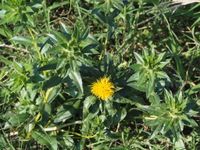
Carthamus tinctorius: "Old World; extensively cultivated in India, China and other parts of Asia; also in Egypt, southern Europe and in South America. Under the name of safflower, the flowers are used largely for dyeing. Phillips says the flowers are used in Spain and in the Levant to color foods. The oil from the seeds in India is used for lamps and for culinary purposes, says Drury. In South America, as well as in Jamaica, as Ainslie writes, the flowers are much used for coloring broths and ragouts. They were so used in England in the time of Parkinson. In American seed catalogs, the seed is offered under the name of saffron but the true saffron is the product of a crocus."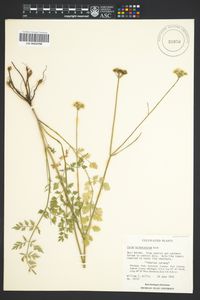
Carum bulbocastanum: "Europe and Asia. The tuberous roots serve as a culinary vegetable and the fruit as a condiment. Lightfoot says the roots are bulbous and taste like a chestnut; in some parts of England they are boiled in broth and served at the table. Pallas says the roots are eaten by the Tartars."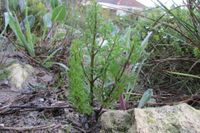
Carum capense: "South Africa. The. edible, aromatic root is called feukel-wortel."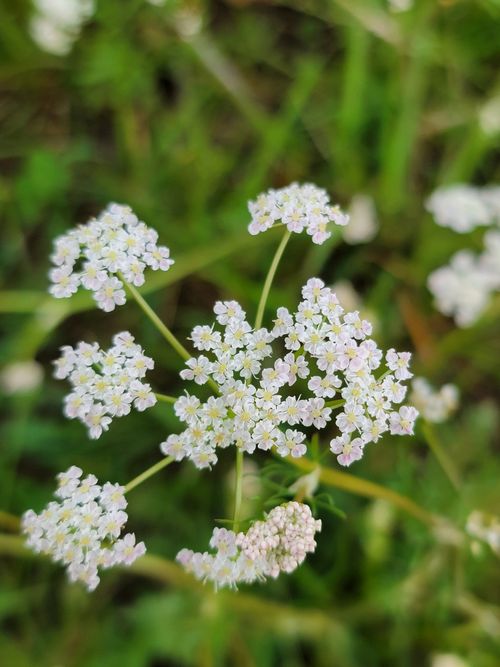
Carum carvi: "Europe, Orient and northern Asia. This biennial plant is described by Dioscorides and mentioned by Galen. Pliny states that it derives its name from its native country, Caria, and that it is used chiefly in the culinary art. Caraway is now cultivated largely for its seed in England, particularly in Essex, in Iceland where it is apparently wild, in Morocco and elsewhere. The seeds are exported from Finland, Russia, Germany, Prussia, North Holland and Morocco. The seeds are used in confectionery and distillation. In England, the seed is used by cottagers to mix with their bread, and caraway-seed bread may often be found in restaurants in the United States. In Schleswig-Holstein and Holland, they are added to a skim-milk cheese called Kummel cheese. The roots are edible and were considered by Parkinson to be superior to parsnips and are still eaten in northern Europe. The young leaves form a good salad and the larger ones may be boiled and eaten as a spinach. Lightfoot says the young leaves are good in soups and the roots are by some esteemed a delicate food. It was cultivated in American gardens in 1806 and is still to be found.
The seeds of caraway were found by O. Heer in the debris of the lake habitations of Switzerland, which establishes the antiquity of the plant in Europe. This fact renders it more probable that the Careum of Pliny is this plant, as also its use by Apicius would indicate. It is mentioned as cultivated in Morocco by Edrisi in the twelfth century. In the Arab writings, quoted by Ibn Baytar, a Mauro-Spaniard of the thirteenth century, it is likewise named; and Fleuckiger and Hanbury think the use of this spice commenced at about this period. Caraway is not noticed by St. Isidore, Archbishop of Seville in the seventh century, although he notices dill, coriander, anise, and parsley; nor is it named by St. Hildegard in Germany in the twelfth century. But, on the other hand, two German medicine books of the twelfth and thirteenth centuries use the word cumick, which is still the popular name in southern Germany. In the same period the seeds appear to have been used by the Welsh physicians of Myddvai, and caraway was certainly in use in England at the close of the fourteenth century and is named in Turner's Libellus, 1538, as also in The Forme of Cury, 1390."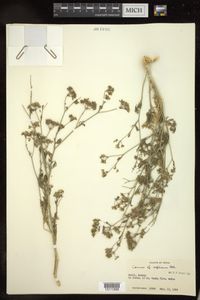
Carum copticum: "Europe, north Africa and northern Asia. This small plant is very much cultivated during the cold season in Bengal, where it is called ajowan, ajonan or javanee. The seeds have an aromatic smell and warm pungent taste and are used in India for culinary purposes as spices with betel nuts and paw leaves and as a carminative medicine. The seeds are said to have the flavor of thyme."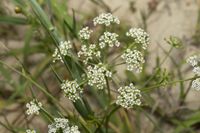
Carum ferulaefolium: "Mediterranean region. This plant is a perennial herb with small, edible tubers. Its whitish and bitterish roots are said by Dioscorides to be eaten both raw and cooked. In Cyprus, these roots are still cooked and eaten."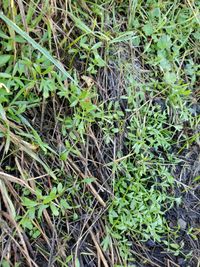
Carum (Perideridia) gairdneri: "Western North America The root is a prominent article of food among the California Indians. The Nez Perce Indians collect the tuberous roots and boil them like potatoes. They are the size of a man's finger, of a very agreeable taste, with a cream-like flavor."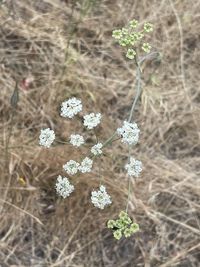
Carum (Perideridia) kelloggii: "California. The root is used by the Indians of California as a food."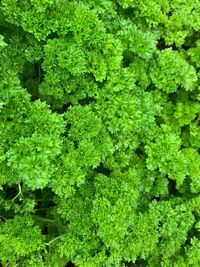
Carum (Petroselinum) petroselinum (crispum): "Old World. Parsley is cultivated everywhere in gardens, for use as a seasoning and as a garnish. Eaten with any dish strongly seasoned with onions, it takes off the smell of onion and prevents the after taste. It excels other herbs for communicating flavor to soups and stews. Among the Greeks and Romans, parsley formed part of the festive garlands, and Pliny states that in his time there was not a salad or a sauce presented at table without it. The ancients supposed that its grateful smell absorbed the inebriating fumes of wine and by that means prevented intoxication. Parsley seems to be the apium of the ancient Romans, the selinon of Theophrastus, who, 322 B. C., describes two varieties; one with crowded, dense leaves, the other with more open and broader leafage. Columella, 42 A. D., speaks of the broad-leaved and curled sorts and gives directions for the culture of each; and Pliny, 79 A. D., mentions the cultivated form as having varieties with a thick leaf and a crisp leaf, evidently copying from Theophrastus. He adds, however, apparently from his own observation, that apium is in general esteem, for the sprays find use in large quantities in broths and give a peculiar palatability to condimental foods. In Achaea, it is used, so he says, for the victor's crown in the Nemean games.
A little later, Galen, 164 A. D., praises parsley as among the commonest of foods, sweet and grateful to the stomach, and says that some eat it with smyrnium mixed with the leaves of lettuce. Palladius, about 210 A. D., mentions the method of procuring the curled form from the common and says that old seed germinates more freely than fresh seed. (This is a peculiarity of parsley seed at present and is directly the opposite to that of celery seed.) Apicius, 230 A. D., a writer on cookery, makes use of the apium viride and of the seed. In the thirteenth century, Albertus Magnus speaks of apium and petroselinum as being kitchen-garden plants; he speaks of each as being an herb the first year, a vegetable the second year of growth. He says apium has broader and larger leaves than petroselinum and that petroselinum has leaves like the cicuta; and that the petroselinum is more of a medicine than a food.
Booth states that parsley was introduced into England in 1548 from Sardinia. In addition to its general use, in Cornwall where it is much esteemed, it is largely used in parsley pies. The plant is now naturalized in some parts of England and Scotland. Parsley is mentioned as seen on the coast of Massachusetts by Verazzano, about 1524, but this is undoubtedly an error. Two kinds, the common and curled, are mentioned for our gardens by McMahon, 1806. Pessenden, 1828, names three sorts, and Thor-burn, 1881, four sorts.
At the present time we have five forms; the common or plain-leaved, the celery-leaved or Neapolitan, the curled, the fem-leaved and the Hamburg, or turnip-rooted."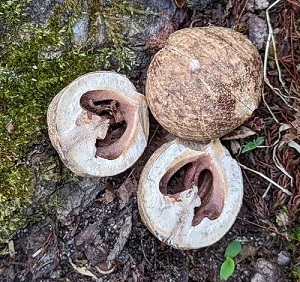
Carya alba: "North America. In 1773, at an Indian village in the South, Bartram noticed a cultivated plantation of the shellbark hickory, the trees thriving and bearing better than those left to nature. Emerson says this tree ought to be cultivated for its nuts which differ exceedingly in different soils and situations and often on individual trees growing in immediate proximity. In 1775, Romans speaks of the Florida Indians using hickory nuts in plenty and making a milky liquor of them, which they called milk of nuts. He says: "This milk they are very fond of and eat it with sweet potatoes in it." The hickory nut now not only furnishes food to a large number of the Indians of the far West but is an important article in our markets and is even exported to Britain."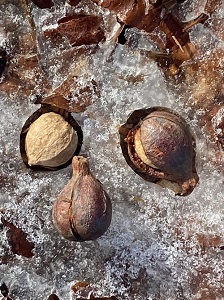
Carya microcarpa: "Eastern North America. The nuts are edible but not prized."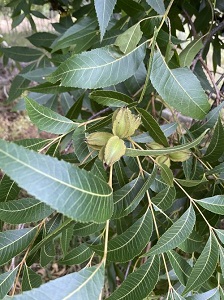
Carya olivaeformis: "A slender tree of eastern North America from Illinois southward. The delicious pecan is well known in our markets and is exported to Europe. It was eaten by the Indians and called by them pecaunes, and an oil expressed from it was used by the natives of Louisiana to season their food. Its use at or near Madrid on the Mississippi by the Indians is mentioned in the Portuguese Relation of De Soto's expedition. The pecan is now extensively cultivated in the Southern States for its fruit."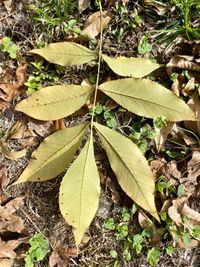
Carya porcina: "North America. The pignut is a large tree of Eastern United States. The nuts are variable in form, hard and tough, the kernel sweetish or bitterish but occasionally eaten by children."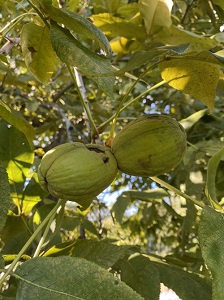
Carya sulcata: "Pennsylvania to Illinois and Kentucky. The nuts of this tree are eaten by the Indians and are considered of fine quality. This is one of the species recommended for culture by the American Pomological Society."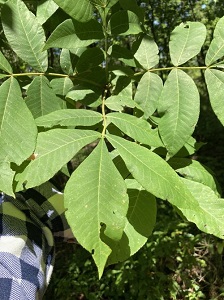
Carya tomentosa: "Eastern North America. This hickory bears a nut with a very thick and hard shell. The kernel is sweet and in some varieties is as large as in the shellbark, but the difficulty of extracting it makes it far less valuable. A variety is found with prominent angles, called square nut."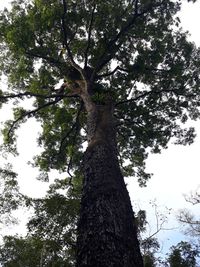
Caryocar amygdaliferum: "A high tree in Ecuador. The kernel of the nut is edible and has the taste of almonds. This is the almendron of Mariquita. "The nuts are fine."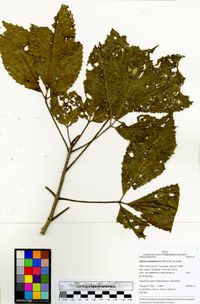
Caryocar amygdaliforme: "Peru. The tree bears nuts that taste like almonds."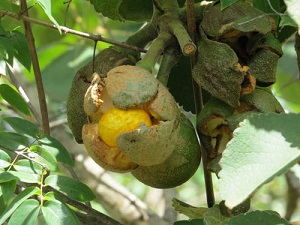
Caryocar brasiliense: "Brazil. This species bears an oily, mucilaginous fruit, containing a sort of chestnut eaten in times of famine. This is perhaps the Acantacaryx pinguis Arruda, a large tree that produces most abundantly a fruit the size of an orange, of which the pulp is oily, feculous and nourishing. It is the delight of the inhabitants of Ceara and Piauhy and is called piqui."
Caryocar butyrosum: "Guiana. This plant is cultivated for its nuts in Cayenne. These are esculent and taste somewhat like a Brazil nut. It is called pekea by the natives of Guiana. It furnishes a timber valuable for shipbuilding."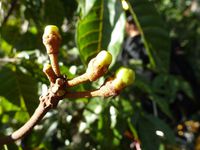
Caryocar glabrum: "Guiana. It furnishes edible nuts. It is sometimes cultivated, and the trees are much used in shipbuilding and for other purposes. The natives make much use of the nuts."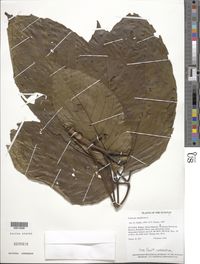
Caryocar nuciferum: "A lofty tree of British Guiana which produces the souari or butternut of the English markets. These nuts are shaped something like a kidney flattened upon two sides and have an exceedingly hard, woody shell of a rich, reddish-brown color, covered all over with round wart-like protuberances, which encloses a large, white kernel of a pleasant, nutty taste yielding a bland oil by pressure."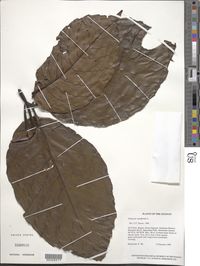
Caryocar tomentosum: "Guiana. The plant bears a sweet and edible nut."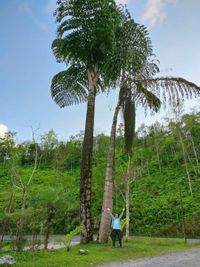
Caryota obtusa: "A very large palm of the Mishmi Mountains in India. The central part of the trunk is used by the natives as food."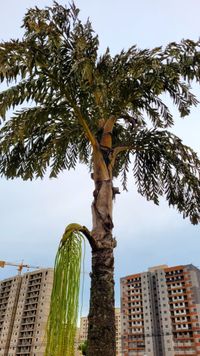
Caryota urens: "Malabar, Bengal, Assam and various other parts of India. The center of the stem is generally soft, the cells being filled with sago-like farina, which is made into bread and eaten as gruel. But the main value of this palm consists in the abundance of sweet sap which is obtained from the cut spadix and which is either fermented or boiled down into syrup and sugar."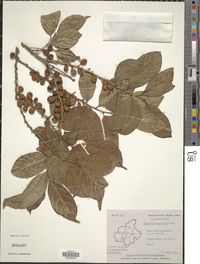
Casearia esculenta: "Tropical Asia. The leaves are eaten by the natives."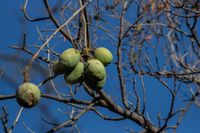
Casimiroa edulis: "Mexico. This tree grows wild and is cultivated in the states of Sinaloa, Durango and elsewhere in Mexico and is known by the name of zapote blanco. The fruit is about an inch in diameter, pale yellow in color and is most palatable when near decay. It has a very rich, subacid taste, and the native Californians are very fond of it. Masters says its fruit has an agreeable taste but induces sleep and is unwholesome and that the seeds are poisonous."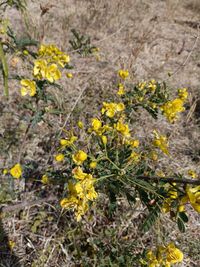
Cassia auriculata: "East Indies. In some parts of the country, a spirituous liquor is prepared by adding the bruised bark to a solution of molasses and allowing the mixture to ferment."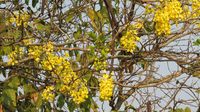
Cassia fistula: "Tropical Asia. This handsome tree has been introduced into the West Indies and northern Africa, whence its-pods are imported for use in medicine. In Mysore, stalks of it are put in the ground and worshipped. It is classed by Unger as among the little-used vegetable foods, the pulp apparently being eaten. This pulp about the seeds is, however, a strong purgative."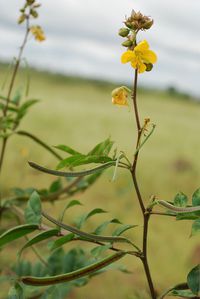
Cassia occidentalis: "Cosmopolitan tropics. Rafinesque says the pods of this plant are long, with many seeds, which the countrymen use instead of coffee. It is found in tropical and subtropical America and in both Indies. It has been carried to the Philippines, and its seeds, while tender, are eaten by boys. Naturalized in the Mauritius, the natives use the roasted seeds as a substitute for coffee. Livingstone found the seeds used as coffee in interior Africa."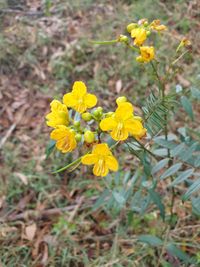
Cassia sophera: "Old World tropics. This plant is said by Unger to be used as a vegetable in Amboina."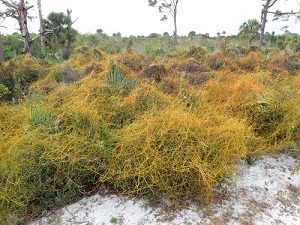
Cassytha filiformis: "Cosmopolitan tropics. The plant is put as a seasoning into buttermilk and is much used for this purpose by the Brahmans in southern India. In Yemen, its berries are eaten by boys."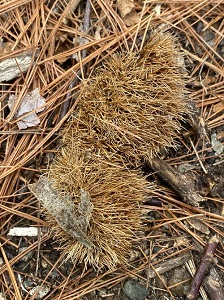
Castanea dentata: "Southward from Maine as far as Florida and westward as far as Michigan but not in the prairie regions. Chestnuts were mixed with pottage by the Indians of New England and they now appear in season in all our markets and are sold roasted on the streets of our cities. The American variety bears smaller and sweeter nuts than the European."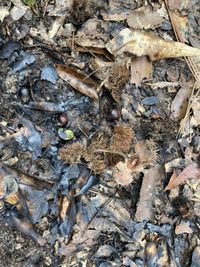
Castanea pumila: "Southern United States. Pursh l says the nuts are sweet and delicious; Vasey, that they are not comparable to those of C. dentata but are eaten by children."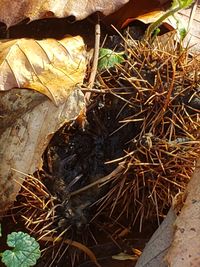
Castanea sativa: "Europe, Japan and North America. The native country of the chestnut is given by Targioni-Tozzetti as the south of Europe from Spain to Caucasus; Pickering says, eastern Asia. Other writers say it was first introduced into Europe from Sardis in Asia Minor; it is called Sardinian balanos by Dioscorides and Dios balanos by Theophrastus. It is evident from the writings of Virgil that chestnuts were abundant in Italy in his time. There are now many varieties cultivated. Chestnuts which bear nuts of a very large size are grown in Madeira. In places, chestnuts form the usual food of the common people, as in the Apennine mountains of Italy, in Savoy and the south of France. They are used not only boiled and roasted but also in puddings, cakes and bread. Chestnuts afford a great part of the food of the peasants in the mountains of Madeira. In Sicily, chestnuts afford the poorer class of people their principal food in some parts of the isle; bread and puddings are made of the flour. In Tuscany, they are ground into flour and chiefly used in the form of porridge or pudding. In the coffeehouses of Lucca, Peseta and Pistoja, pates, muffins, tarts and other articles are made of chestnuts and are considered delicious. In Morea, chestnuts now form the principal food of the people for the whole year. Xenophon states that the children of the Persian nobility were fattened on chestnuts. In the valleys inhabited by the Waldenses, in the Cevennes and in a great part of Spain, the chestnut furnishes nutriment for the common people. Charlemagne commended the propagation of chestnuts to his people. In modern Europe, only the fruits of cultivated varieties are considered suitable for food. This species is enumerated by Thunberg n as among the edible plants of Japan."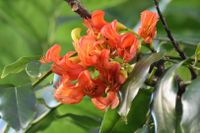
Castanospermum australe: "Australia. Eraser says the fruit is eaten by the natives on all occasions and when roasted has the flavor of a Spanish chestnut. Europeans, from necessity, have subsisted on the fruit for two days, the raw fruit griping but the roasted being innoxious."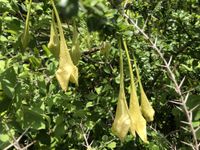
Catesbaea spinosa: "A shrub of the West, Indies. The fruit is yellow, pulpy and of an agreeable taste."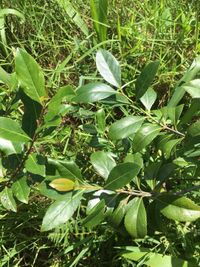
Catha edulis: "A shrub of tropical Africa. The leaves are used by the Arabs in the preparation of a beverage possessing properties analogous to those of tea and coffee. Large quantities of twigs with the leaves attached are annually brought to Aden from the interior. The shrub is called by the natives cafta. Prior to the introduction of coffee, says Pickering, the use of kat was established in Yemen by Alt Schadheli ben Omar. Various virtues are attributed to the leaves which are eaten with avidity by the Arabs."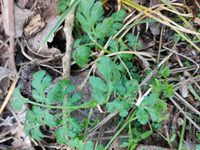
Caucalis anthriscus: "Europe. Wilkinson says this is the anthriscum of Pliny, now called in Arabic gezzer e'shaytan, and that it is esculent."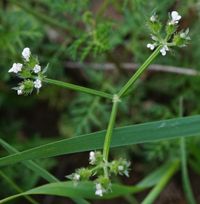
Caucalis daucoides: "Europe and temperate Asia. Gerarde calls this plant bastard parsley and hen's foot. It is the sesslis of the Egyptians. It was called a potherb by Dioscorides and Pliny, and Galen says it is pickled for salads in winter."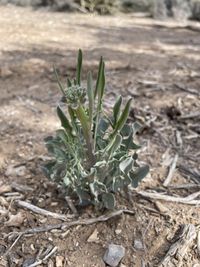
Caulanthus crassicaulis: "Europe and temperate Asia. Gerarde calls this plant bastard parsley and hen's foot. It is the sesslis of the Egyptians. It was called a potherb by Dioscorides and Pliny, and Galen says it is pickled for salads in winter.Western regions of America. It is sometimes used as a food, says Rothrock, when a better substitute cannot be found."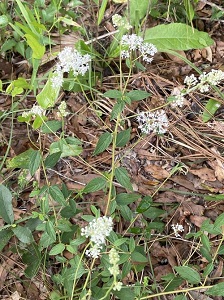
Ceanothus americanus: "North America. The leaves were used as a substitute for tea during the American Revolution."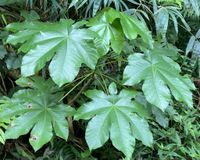
Cecropia peltata: "American tropics. The young buds are eaten as a potherb."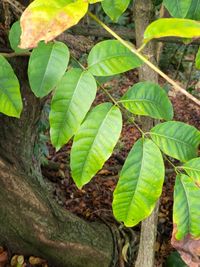
Cedrela odorata: "South America. Smith says, in China the leaves of this tree are eaten in the spring when quite tender."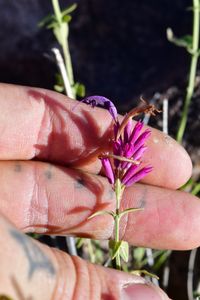
Cedronella cana: "Mexico. This pretty and very fragrant plant is useful for putting in a claret cup."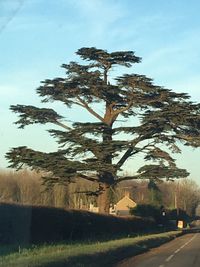
Cedrus libani: "Asia Minor, Syria, Afghanistan, Himalayan region and Algeria. A kind of manna was anciently collected from this tree."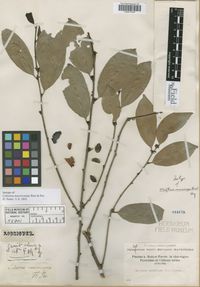
Celastrus macrocarpus: "Peru. It has savory, alimentary buds. The seeds yield an edible oil."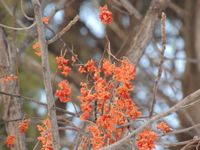
Celastrus scandens: "Northern North America. The Chippewa Indians use the tender branches. The plant has a thick bark which is sweetish and palatable when boiled."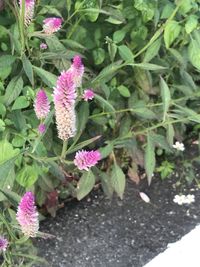
Celosia argentea: "Cosmopolitan tropics. In China, this plant is a troublesome weed in flax fields but is gathered and consumed as a vegetable. In France, it is grown in flower gardens."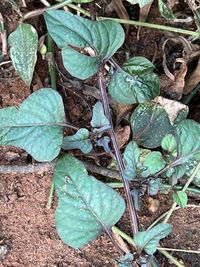
Celosia trigyna: "Tropical Africa. According to Grant, this plant is eaten as a potherb."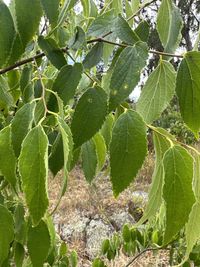
Celtis australis: "Europe, temperate Asia and East Indies. The European nettle is a native of Barbary and is grown as a shade tree in the south of France and Italy. Dr. Hogg considers it to be the lote tree of the ancients, "lotos to dendron" of Dioscorides and Theophrastus; Sibthorp and Stackhouse are of the same opinion. The fruit is about the size of a small cherry, yellow, dark brown or black. The modern Greeks are very fond of the fruits; they are also eaten in Spain. They are called in Greece honeyberries and are insipidly sweet. In India, Brandis says a large, blackish or purple kind is called roku on the Sutlej; a smaller yellow or orange kind choku."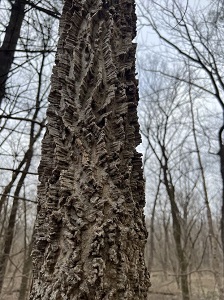
Celtis occidentalis: "Southern and Western United States. This celtis is a fine forest tree. The fruits are sweet and edible."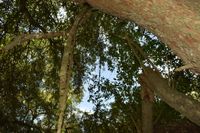
Celtis tala: "Mexico. This is the cranjero or cranxero of the Mexicans. The berries of this shrub are of the size of small peas, oval, orange-yellow and somewhat edible though astringent."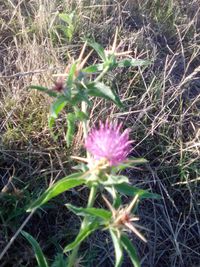
Centaurea calcitrapa: "Europe, north Africa and temperate Asia. The young stems and leaves, according to Forskal, are eaten raw in Egypt."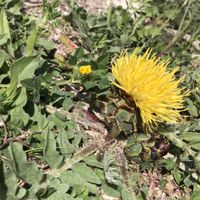
Centaurea chamaerhaponticum: "Mediterranean coasts. In Algeria, according to Desfontaenes, the root is edible and not unpleasant to the taste."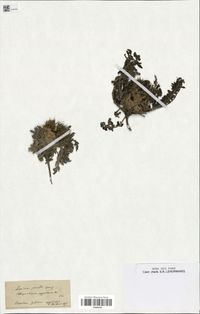
Centaurea pygmaea: "Mediterranean countries. The roots have an agreeable flavor and are eaten by the Arabs in some parts of Africa."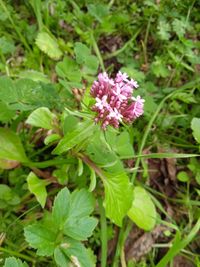
Centranthus macrosiphon: "Spain. Valerian is an annual cultivated in gardens for its handsome, rose-colored flowers and is used as a salad in some countries, notably in France. It appears to combine all that belongs to corn salad, with a peculiar slight bitterness which imparts to it a more distinct and agreeable flavor."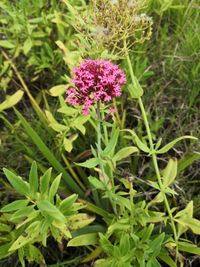
Centranthus ruber: "Red Valerian is said to be eaten as a salad in southern Italy."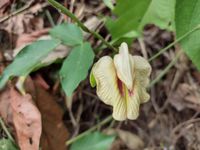
Centrosema macrocarpum: "British Guiana. The beans are eaten by the Indians, according to Schomburgk. The leaves, according to A. A. Black, are also eaten."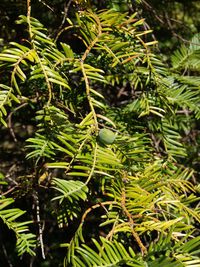
Cephalotaxus drupacea: "Japan. The female plant bears a stone-fruit closely resembling a plum in structure. The flesh is thick, juicy and remarkably sweet, with a faint suggestion of the pine in its flavor."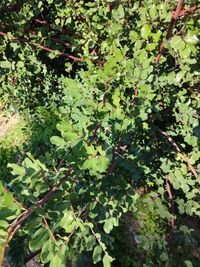
Ceratonia siliqua: "This tree is indigenous in Spain and Algeria, the eastern part of the Mediterranean region, in Syria; and is found in Malta, the Balearic Islands, in southern Italy, in Turkey, Greece and Grecian Islands, in Asia Minor, Palestine and the north of Africa.8 It was found by Denham and Clapperton in the Kingdom of Bornu, in the center of Africa. The pods being filled with a saccharine pulp, are eaten, both green and dry and were a favorite food with the ancients; there are specimens preserved in the museum at Naples which were exhumed from a house in Pompeii. The Egyptians extracted from the husk of the pod a sort of honey, with which they preserved fruits; in Sicily, a spirit and a sirup are prepared from them;l in the island of Diu or Standia, the luscious pulp contained in the pod is eaten by the poor and children and is also made into a sherbet. These pods are imported into the Punjab as food for man, horses, pigs and cattle and are imported into England occasionally as a cattle food. In 1854, seeds of this tree were distributed from the United States Patent Office."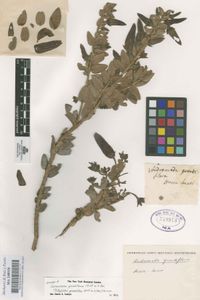
Ceratostema grandiflorum: "Peruvian Andes. This tall, evergreen shrub produces berries of a pleasant, acidulous taste."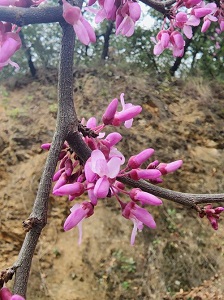
Cercis canadensis: "North America. The French Canadians use the flowers in salads and pickles."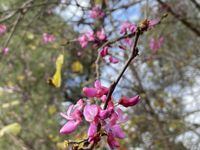
Cercis siliquastrum: "Mediterranean countries. The pods are gathered and used with other raw vegetables by the Greeks and Turks in salads, to which they give an agreeable odor and taste. The flowers are also made into fritters with batter and the flower-buds are pickled in vinegar."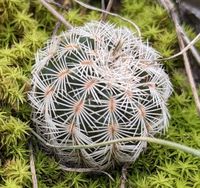
Cereus (Echinocereus) caespitosus: "Texas. The fruit, rarely an inch long, is edible, and the fleshy part of the stem is also eaten by the inhabitants of New Mexico. The fruit is of a purplish color and very good, resembling a gooseberry. The Mexicans eat the fleshy part of the stem as a vegetable, first carefully freeing it of spines."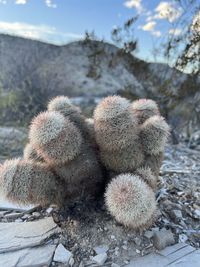
Cereus (Echinocereus) dasyacanthus: "Southwestern North America. The fruit is one to one and one-half inches in diameter, green or greenish-purple, and when fully ripe is delicious to eat, much like a gooseberry."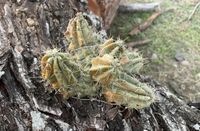
Cereus (Echinocereus) dubius (enneacanthus): "Southwestern North America. The ripe fruit, one to one and one-half inches long, green or rarely purplish, is insipid or pleasantly acid."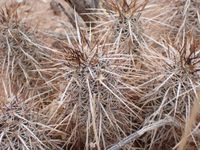
Cereus (Echinocereus) engelmanni: "Southwestern North America. This plant bears a deliciously palatable fruit."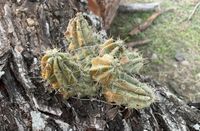
Cereus (Echinocereus) enneacanthus: "Southwestern North America. The berry is pleasant to eat."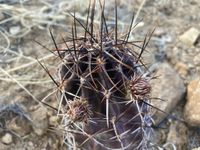
Cereus (Echinocereus) fendleri: "New Mexico. The purplish-green fruit is edible."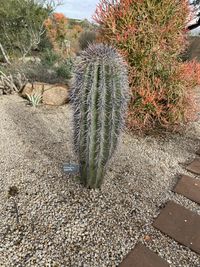
Cereus (Echinocereus) giganteus (gigantea): "Texas. This cactus yields a fruit sweet and delicious. The Indians collect it in large quantities and make a sirup or conserve from the juice, which serves them as a luxury as well as for sustenance. The Mexicans call the tree suwarrow; the Indians, harsee. The sirup manufactured from the juice is called sistor. Engelmann says the crimson-colored pulp is sweet, rather insipid and of the consistency of a fresh fig. Hodge, in Arizona, calls the fruit delicious, having the combined flavor of the peach, strawberry and fig."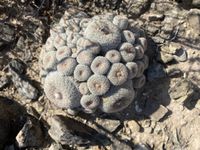
Cereus (Peniocereus) greggii: "Texas. The plant has a bright scarlet, fleshy, edible berry."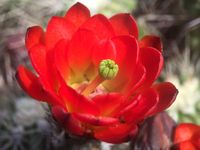
Cereus (Echinocereus) polyacanthus: "Texas. It bears a berry of a pleasant taste."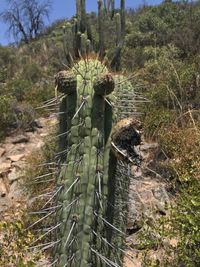
Cereus quisco: "Chile. The sweetish, mucilaginous fruits are available for desserts."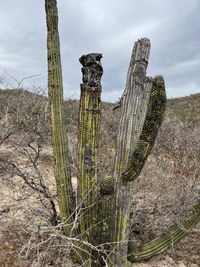
Cereus (Stenocereus) thurberi: "New Mexico. This plant grows in the Papago Indian country on the borders of Arizona and Sonora and attains a height of 18 to 20 feet and a diameter of four to six inches and bears two crops of fruit a year. The fruit is, according to Engelmann, three inches through, like a large orange, of delicious taste, the crimson pulp being dotted with numerous, black seeds. The seeds, after passing through the digestive canal, are collected, according to Baegert and Clavigero, and pounded into a meal used in forming a food. Venegas, in his History of California, describes the fruit as growing to the boughs, the pulp resembling that of a fig only more soft and luscious. In some, it is white; in some red; and in others yellow but always of an exquisite taste; some again are wholly sweet, others of a grateful acid. This cactus is called pithaya by the Mexicans and affords a staple sustenance for the Papago Indians."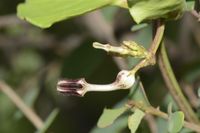
Ceropegia bulbosa: "East Indies. Roxburgh says, "men eat every part."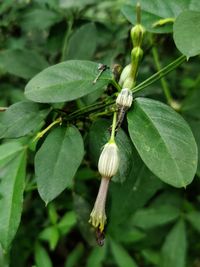
Ceropegia tuberosa: "East Indies. Every part is esculent; the roots are eaten raw."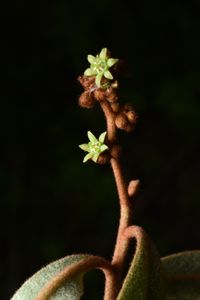
Cervantesia tomentosa: "Peru. Its seeds are edible."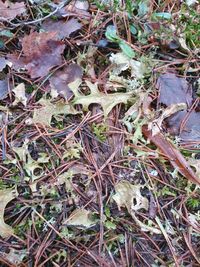
Cetraria islandica: "Iceland moss is found in the northern regions of both continents and on elevated mountains farther south. It serves as food to the people of Iceland and Lapland; the bitterness is first extracted with water, after which the plant is pounded up into meal for bread or boiled with milk."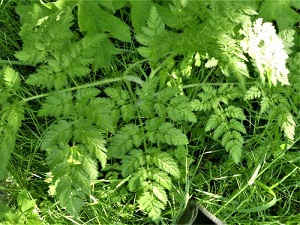
Chaerophyllum bulbosum: "Europe and Asia Minor. In Bavaria, this vegetable is found growing wild but is said to have been first introduced from Siberia. Burnett alludes to it as deleterious, but Haller affirms that the Kalmucks eat the roots with their fish and commend them as a nutritive and agreeable food. Booth says it is a native of France and, although known to British gardeners since its introduction in 1726, it is only within the last few years that attention has been directed to its culture as an esculent vegetable. In size and shape, the root attains the dimensions of a small Dutch carrot. It is outwardly of a grey color, but when cut the flesh is white, mealy and by no means unpleasant to the taste. F. Webster, consul at Munich, Bavaria, in 1864, sent some seed to this country and says: "The great value of this vegetable, as an acquisition to an American gardener, is not only its deliciousness to the epicure but the earliness of its maturity, fully supplying the place of potatoes." The seed is now offered in our seed catalogs. The wild plant is described by Camerarius, 1588 and by Clusius, 1601, and is also named by Bauhin, 1623. As a cultivated plant, it seems to have been first noted about 1855, when the root is described as seldom so large as a hazelnut, while in 1861 it had attained the size and shape of the French round carrot. This chervil appeared in American seed catalogs in 1884, or earlier, and was described by Burr for American gardens in 1863. It was known in England in 1726 but was not under culture."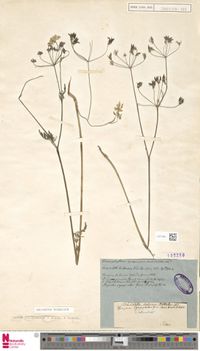
Chaerophyllum tuberosum: "In the Himalayas, the tuberous roots are eaten and are called sham."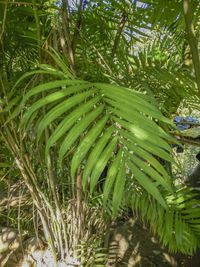
Chamaedorea elegans: "South America. The young, unexpanded flower-spikes are used as a vegetable."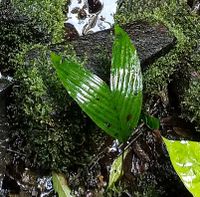
Chamaedorea tepejilote: "Mexico. The flowers, when still enclosed in the spathes, are highly esteemed as a culinary vegetable."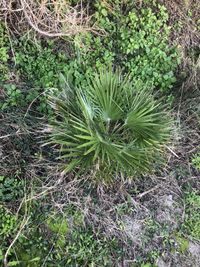
Chamaerops humilis: "West Mediterranean countries. The young shoots or suckers from the bottom of the plant, called cafaglioni, are eaten by the Italians. In Barbary, the lower part of the young stems and the roots are eaten by the Moors."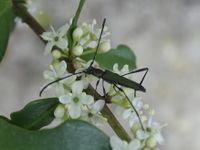
Chelidonium sinense: "China. The leaves were eaten as a food in China in the fourteenth century."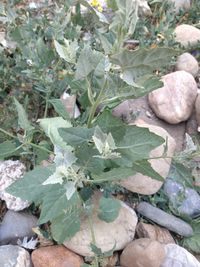
Chenopodium album: "Temperate and tropical regions. Remnants of this plant have been found in the early lake villages of Switzerland. In the Hebrides, it was observed by Lightfoot to be boiled and eaten as greens. In the United States, it is used as a spinach. The young, tender plants are collected by the Navajoes, the Pueblo Indians of New Mexico, all the tribes of Arizona, the Diggers of California and the Utahs, and boiled as a spinach or are eaten raw. The seeds are gathered by many tribes, ground into a flour and made into a bread or mush."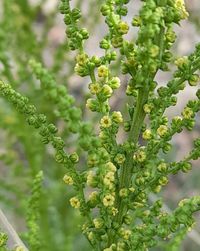
Chenopodium ambrosioides: "Temperate and tropical regions. This herb is called in Mexican epazolt. The plant is cooked and eaten by the natives. It was called at Verona, in 1745, the allemand because drunk in infusion by the Germans. It seems to be indigenous to tropical America."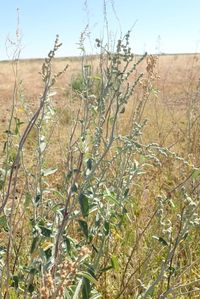
Chenopodium auricomum: "Australia. This plant is a native of the interior of Australia and has lately come into use in England as a substitute for spinach, according to J. Smith. Mueller calls this spinach palatable and nutritious."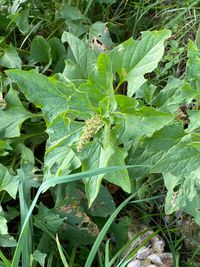
Chenopodium bonus-henricus: "Europe, now sparingly naturalized around dwellings in the United States. Under the curious names of fat-hen and good-king-Henry, this plant was formerly largely cultivated in the gardens in England as a potherb, and even in the beginning of the present century was still esteemed in Lincolnshire and some of the Midland counties but is now little used. Lightfoot says, in Scotland, the young leaves in the spring are often eaten as greens and are very good. Glasspoole says, in Lincolnshire, it was preferred to garden spinach, and the young shoots used to be peeled and eaten as asparagus. The plant is now but rarely cultivated. Gerarde speaks of it in 1597 as a wild plant only, while Ray, 1686, refers to it as frequently among vegetables. Bryant, 1783, says: "formerly cultivated in English gardens but of late neglected, although certainly of sufficient merit." In 1807, Miller's Gardener's Dictionary says it is generally in gardens about Boston in Lincolnshire and is there preferred to spinach. It cannot ever have received very general culture as it is only indicated as a wayside plant by Tragus, 1552; Lobel, 1570 and 1576; Camerarius, 1586; Dalechamp, 1587; Matthiolus, 1598; and Chabraeus, 1677. Its value as an antiscorbutic finds recognition in its names, bonus Henricus and tota bona."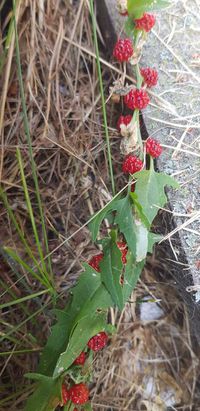
Chenopodium capitatum: "Northern and southern regions. Gerarde says: "it is one of the potherbes that be unsavory or without taste, whose substance is waterish." The fruit, though insipid, is said formerly to have been employed in cookery. The leaves have a spinach-like flavor and may be used as a substitute for it. Unger says even the blite or strawberry spinach finds consumers for its insipid, strawberry-like fruit. The plant is found indigenous and common from Western New York to Lake Superior and northward. Blitum capitatum, if Linnaeus's synonymy can be trusted, was known to Bauhin, 1623, and by Ray, 1686. Miller's Gardener's Dictionary refers it to J. Bauhin who received the plant in 1651. The species was, during this time, little known outside of botanical gardens."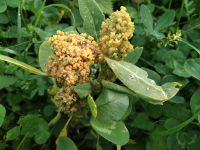
Chenopodium quinoa: "South America. This plant, indigenous to the Pacific slopes of the Andes, constituted the most important article of food of the inhabitants of New Granada, Peru and Chile at the time of the discovery of America, and at the present day is still extensively cultivated on account of its seeds, which are used extensively by the poorer inhabitants. There are several varieties, of which the white is cultivated in Europe as a spinach plant, rather than for its seeds. However prepared, the seed, says Thompson, is unpalatable to strangers. Gibbon, who saw the plant in Bolivia, says that when boiled like rice and eaten with milk, the seeds are very savory. Seeds from France but originally from Peru, were distributed from the United States Patent Office in 1854. Garcilasso de la Vegal says it was called quinua by the natives of Peru and mujo by the Spaniards. He says: "Both the Indians and the Spanish eat the tender leaf in their dishes, because they are savory and very wholesome. They also eat the grain in the soups, prepared in various ways." A black-seeded variety, cultivated in gardens, is mentioned by Feuille, in Peru, preceding 1725. It was introduced into France in 1785 but has not had very extended use. Molina says in Chile there is a variety called dahue by the Indians which has greyish leaves and produces a white grain. The grain of the quinua serves for making a very pleasant stomachic beverage; that of the dahue, on being boiled, lengthens out in the form of worms and is excellent in soup. The leaves are also eaten and are tender and of an agreeable taste."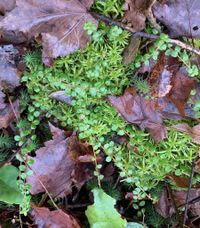
Chiogenes (Gaultheria) serpyllifolia: "North America and Japan. The berry is white, edible, juicy and of an agreeable, subacid taste with a pleasant checkerberry flavor. The Indians of Maine use the leaves of the creeping snowberry for tea."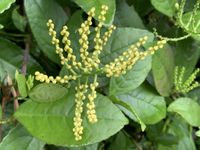
Chloranthus inconspicuus: "China and Japan. This plant furnishes the flowers which serve to scent some sorts of tea, particularly an expensive sort called chu-lan-cha."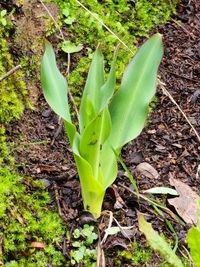
Chlorogalum pomeridianum: "California. The egg-shaped bulb is one to three inches in diameter. Cooking eliminates all the acrid properties, rendering the bulb good, wholesome food."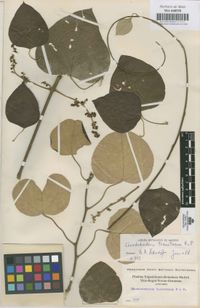
Chondodendron tomentosum: "Peru. This plant is called by the Peruvians wild grape on account of the form of the fruit and its acid and not unpleasant flavor."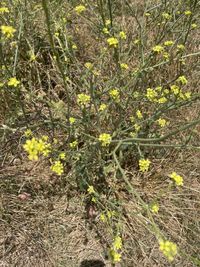
Chondrilla juncea: "Southern Europe and adjoining Asia. This plant is mentioned by Dorotheus as good for cooking and for the stomach; it is enumerated by Pliny as among the esculent plants of Egypt."
Chondrilla prenanthoides: "East Mediterranean countries and mountains of Yemen. This plant is enumerated by Pliny as among the esculents of Egypt. Forskal says it is eaten raw in Yemen."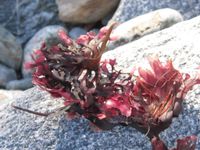
Chondrus crispus: "This alga is found on the western coast of Ireland, England and Europe and also on the eastern coast of the United States. It has been used as a food and medicine by the Irish peasants from time immemorial. It is collected for the market and is largely used as a food for invalids under the names carrageen, Irish moss and pearl moss."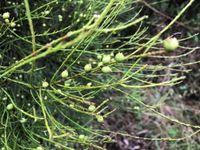
Choretrum candollei: "A shrub bearing greenish-red berries which are called wild currants in New South Wales. They have a pleasant, acid taste combined with a certain degree of astringency. Mixed with other fruit, they are used for preserves and in the preparation of cooling, acid beverages."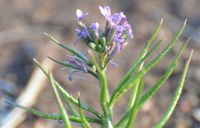
Chorispora tenella: "Central Asia. The leaves of this plant are described as a good, early salad by Pallas in his Travels in Russia."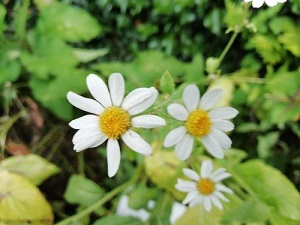
Chrysanthemum balsamita: "West Mediterranean countries. This plant is common in every cottage garden in England, where it was introduced in 1568. The leaves possess a strong, balsamic odor and are sometimes put in salads but it has ceased to be grown for culinary purposes and even in France is only occasionally used. The leaves were formerly used in England to flavor ale and negus, hence the name alecost. In the United States, it is mentioned by Burr, 1863, who names one variety. It is grown in Constantinople."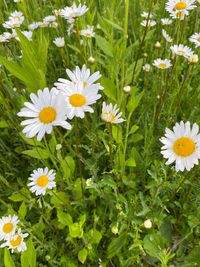
Chrysanthemum leucanthemum: "Europe. Johnson says the leaves may be eaten as salad. The plant is the well-known flower of our fields, where it has become naturalized."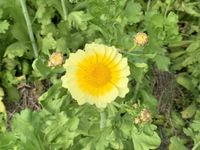
Chrysanthemum segetum: "Europe, north Africa and western Asia. The stalks and leaves, "as Dioscorides saith, are eaten as other pot herbes are." In northern Japan and China, Miss Bird describes a cultivated form of chrysanthemum as occurring frequently in patches and says the petals are partially boiled and are eaten with vinegar as a dainty."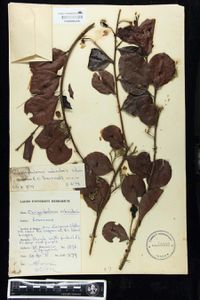
Chrysobalanus ellipticus: "African tropics. This plant bears a damson-sized fruit with a black, thin skin and is eaten."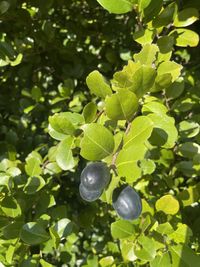
Chrysobalanus icaco: "African and American tropics. This tree-like shrub, with its fruit similar to the damson, grows wild as well as cultivated in the forests along the shores of South America and in Florida. Browne says in Jamaica the fruit is perfectly insipid but contains a large nut inclosing a kernel of very delicious flavor. The fruits in the West Indies, prepared with sugar, form a favorite conserve with the Spanish colonists, and large quantities are annually exported from Cuba. On the African coast it occurs from the Senegal to the Congo. The fruit is eaten by the natives of Angola and, according to Montiero, is like a round, black-purple plum, tasteless and astringent. Sabine says: "the fruit is about the size of an Orleans plum but is rounder, of a yellow color, with a flesh soft and juicy, the flavor having much resemblance to that of noyau."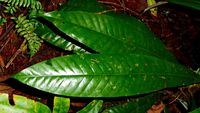
Chrysophyllum africanum: "African tropics. This is a tall tree of Sierra Leone, whose fruit is in request."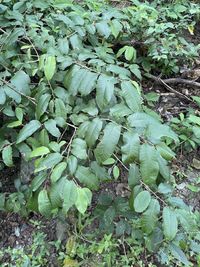
Chrysophyllum argenteum: "Martinique. The fruit, the size of a plum, contains a soft, bluish, edible pulp."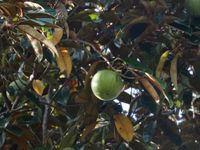
Chrysophyllum cainito: "West Indies This tree has been cultivated from time immemorial in the West Indies but nowhere is found wild. It seems to have been observed by Cieza de Leon in his travels in Peru, 1532-50, and is called caymitos. Lunan says some trees bear fruit with a purple and some with a white skin and pulp, which when soft is like jelly, with milky veins and has a sweet and pleasant taste."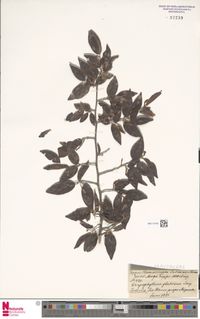
Chrysophyllum glabrum: "Martinique. The fruit is blue, of the form and size of a small olive and is seldom eaten except by children."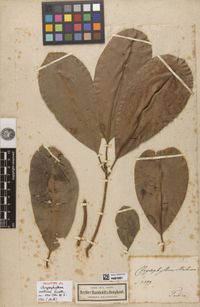
Chrysophyllum michino: "New Granada. The fruit is yellow outside, whitish and clammy inside and is very grateful."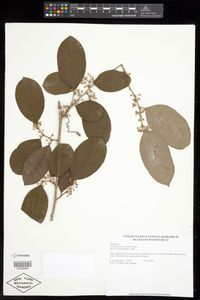
Chrysophyllum microcarpum: "Haiti. The fruit is the size of a gooseberry, of a very sweet, delicious taste."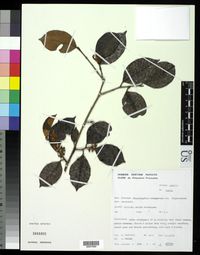
Chrysophyllum monopyrenum: "West Indies. The fruit is oval and about the size of a Bergamot pear. It contains a white, clammy juice when fresh, which, after being kept a few days, becomes sweet, and delicious. It frequently contains four or five black seeds about the size of pumpkin seeds."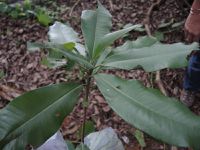
Chrysophyllum obovatum: "African tropics. The fruit is the size of an apple, with a short apex and is much inferior to the star apple of the West Indies."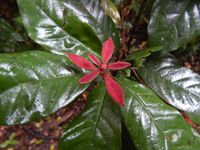
Chrysophyllum pruniferum: "Australia. The fruit is of a plum-like appearance and is edible."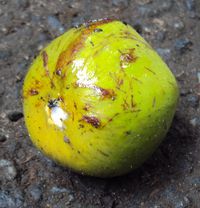
Chrysophyllum roxburghii: "Asiatic tropics. The fruit is greedily eaten by the natives. It is the size of a small crab, yellow when ripe, smooth and is greedily eaten although insipid. The pulp is tolerably firm but is exceedingly clammy, adhering to the lips or knife with great tenacity."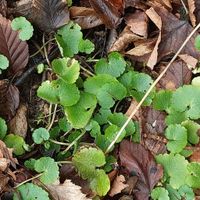
Chrysosplenium alternifolium: "Europe, northern Asia and North America. The leaves are eaten as a salad in the Vosges Mountains."
Chrysosplenium oppositifolium: "Europe, northern Asia and East Indies. In some countries, this plant is eaten as a salad.6 The leaves are eaten in salad and soup."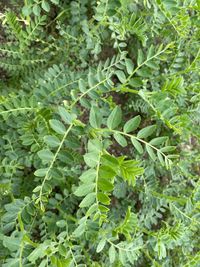
Cicer arietinum: "Europe, Orient and the East Indies. This plant is represented as growing wild in the Caucasus, in Greece and elsewhere; it is also found escaped from cultivation in the fields of middle Europe. The Jews, Greeks and Egyptians cultivated it in ancient times. It is extensively cultivated at the present time in the south of Europe, in the Levant, in Egypt as far as Abyssinia and in India. The seeds vary in size and color in the different varieties. In Paris, they are much used for soups. In India, they are ground into a meal and either eaten in puddings or made into cakes. They are also toasted or parched and made into a sort of comfit. In India, says Wight: "The leaves of the plant secrete an acid which the natives collect by spreading a cloth over night on the plant and wringing out the dew in the morning. They then use it as vinegar or for forming a cooling drink." In 1854, the seed was distributed from the United States Patent Office.
The shape of the unripe seed, which singularly resembles a ram's head, may account for its being regarded as unclean by the Egyptians of the time of Herodotus. It was in common use in ancient Rome and varieties are mentioned by Columella and Pliny, the latter naming the white and black, the Dove of Venus pea, and many kinds differing from each other in size. Albertus Magnus, in the thirteenth century, mentions the red, the white and the black sorts, and this mention of colors is continued by the herbalists of the sixteenth, seventeenth, and eighteenth centuries. The white chick-pea is the sort now generally grown in France, where the dried seeds find large use in soups. The red variety is now extensively grown in eastern countries, and the black sort is described as more curious than useful." #####################Cichorium endivia 191